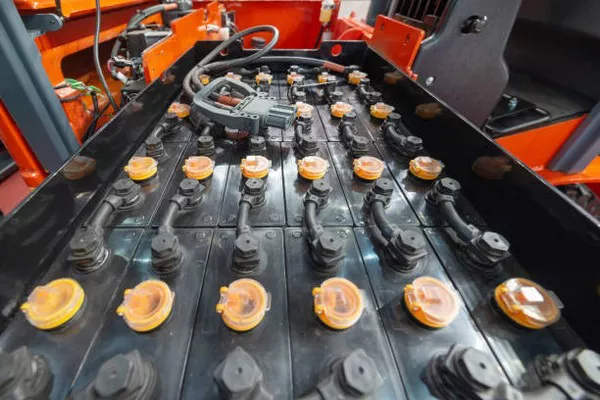Generators are essential tools in times of power outages and emergencies, ensuring that your household appliances, like refrigerators, continue to function. When it comes to selecting the right generator size to run your refrigerator, you need to consider various factors. This article will guide you through the process of determining the generator size you need to keep your refrigerator running during power disruptions.
Importance of a Generator for Your Refrigerator
Before delving into the specifics of generator sizing, let’s briefly explore why it’s crucial to have a generator that can power your refrigerator. Refrigerators are vital appliances in any household, as they help preserve perishable food items and maintain a safe storage environment. During a power outage, maintaining refrigerator functionality is not only convenient but also essential to prevent food spoilage and waste. A generator ensures that your refrigerator remains operational during these interruptions, helping you avoid potential losses and food safety concerns.
Factors Affecting Generator Size
To determine the right generator size for your refrigerator, you must consider several key factors:
Refrigerator Power Consumption: The power consumption of your refrigerator is typically measured in watts (W) or kilowatts (kW). You can find this information on the appliance’s label or in the owner’s manual. The power rating may vary depending on the make and model.
Starting Surge Power: When a refrigerator initially starts, it requires a surge of power that can be significantly higher than its continuous running power. This surge is essential for kick-starting the compressor. The surge power is typically 2 to 3 times the running power and lasts for a few seconds.
Generator’s Running Capacity: Generators are rated based on their continuous running capacity, usually measured in watts (W) or kilowatts (kW). You must select a generator with a continuous power rating that can handle both the refrigerator’s running and surge power.
Additional Loads: Consider any other essential appliances or devices you wish to power during an outage. These might include lights, a sump pump, or a microwave. Add up the power requirements of all devices to determine the total load on the generator.
Generator Type: Different types of generators, such as portable and standby generators, have varying power capacities. The type of generator you choose will affect your selection of the right size.
Fuel Type: The generator’s fuel type, such as gasoline, propane, or diesel, can also impact its power output and efficiency.
Calculating Generator Size
To calculate the generator size you need to run your refrigerator effectively, follow these steps:
Determine Refrigerator’s Running Power: Find the power rating of your refrigerator in watts (W) or kilowatts (kW). This is the continuous power it requires to operate. If the label only provides amperage and voltage information, you can calculate the power by multiplying the current (in amps) by the voltage (in volts).
Calculate Starting Surge Power: Determine the starting surge power required by your refrigerator. This is typically 2 to 3 times the running power. For example, if your refrigerator runs at 400W, the surge power may be between 800W and 1200W.
Total the Load: Add up the power requirements of all appliances and devices you intend to power with the generator during an outage. Make sure to include the surge power for the refrigerator.
Select the Right Generator Size: Choose a generator with a continuous running capacity (rated in watts or kilowatts) that exceeds the total load you calculated. It’s essential to have some margin for additional appliances or unexpected power needs.
Consider Fuel Type and Type of Generator: Select the type of generator (portable or standby) and fuel type that best suits your needs. Ensure that the generator you choose can provide the required power output.
Example Calculation
Let’s work through an example to illustrate the process of calculating the generator size needed for a refrigerator and other essential appliances.
Refrigerator Running Power: Assume your refrigerator has a running power of 400W.
Surge Power: The surge power for the refrigerator is typically 2 to 3 times the running power. Let’s assume 800W for the surge power.
Additional Loads: Suppose you also want to power a few LED lights (50W), a sump pump (800W surge power), and a microwave (1000W) during an outage.
Total Load: Add up all the power requirements:
- Refrigerator (running power): 400W
- LED lights: 50W
- Sump pump (surge power): 800W
- Microwave: 1000W
- Surge power for the refrigerator: 800W
- Total Load: 3050W (3.05 kW)
Selecting the Generator: To accommodate the total load of 3.05 kW, you should choose a generator with a continuous running capacity of at least 4 kW. This provides some margin for additional devices and ensures the generator can handle the surge power of the refrigerator.
Conclusion
Selecting the right generator size to run your refrigerator during a power outage is a critical decision to ensure food preservation and household functionality. To make an informed choice, consider the refrigerator’s running and surge power, calculate the total load of all appliances you wish to power, and select a generator with a continuous running capacity that exceeds the total load. Remember to account for any additional devices and appliances, and choose the type and fuel source that align with your specific needs. By following these guidelines, you can ensure that your refrigerator and other essential appliances remain operational when the power goes out, providing peace of mind during unexpected outages.

